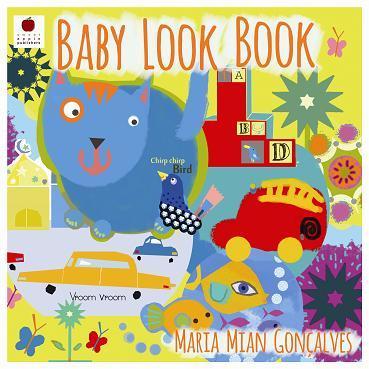Reading to your Baby

board book
baby board book
I started taking my son to the library when he was about six months old, ignoring the bemused looks thrown my way by other parents, or family members. Sharing quality cuddling moments with him and a book led him to naturally incorporate books into his daily routine and as he got older, he continued to associate books with fun. Now that he is twelve, his bookshelf is bulging with all sorts of encyclopedias, fictional and non fictional books, that I was pestered (yes pestered) into buying for him. The great part is that as he grew in reading age, the treasures were passed down to his little brother (whose bookshelf is equally bulging)!
Why read to a newborn he doesn’t understand me?
While your newborn doesn't understand what you're saying, he can still begin to pick up the rhythm, tones and inflections of your voice—that comforting loving voice that your baby started recognising in the womb, and loves to hear! Research shows that the more words a baby is exposed to, the better prepared he is to eventually start reading on his own. Children whose parents frequently talk or read to them know more words by the age of two than children who have not been read to. And children who are read to during their early years are more likely to learn to read at the right time.
What to read to your baby
You must have noticed your baby stares at some colours longer than others. Don't forget, babies love illustrations and art. They can see colours by three months of age and register their favourites—bold primary reds, greens, blues, and yellows.
Other than building vocabulary and memory and listening skills, reading to your baby introduces her to the concepts of stories, numbers, letters, colours, and shapes, and gives him information about the world around him.
For the first few months your baby picks up on the rhythm of language rather than content and may also be fascinated by pictures with bright colours and sharp contrast, so get plenty of board books and picture books. Between 4 and 6 months your baby will begin to show more interest in books and other than delight in your reading to them, will explore them the same way they explore everything at that age—by mouthing, chewing and dropping them. So make sure you choose sturdy books with rounded corners, like our Baby Look Book. Older babies will develop preferences for certain pictures, stories or books and make their favourites clear to you by lighting up when you bring them out and making sounds or pointing at their favourite pictures.

The most important thing is that your baby will love this special time with you, and make a connection between your love and books, which needless to say will leave a lasting positive impact on his relationship with reading.
Who should read to my baby
Every member of the family can and should read to your baby. In fact every different member will bring a varied intonation and inflection of voice which will appeal to the child in different ways.
Research shows that in families, it is the mothers who do most of the reading to children. Campaigns like that run by Booktrust and The National Literacy Trust aim to encourage fathers to enjoy time reading to their child too. Often, an older child’s sentiment is clearly felt, when a father cuddles up to read to them. They clearly value this endearing time when the busy man they love so much drops everything to share a book with them. We have done our part here at Sweet Apple Publishers in that regard too! As we are yet to meet a father who didn’t jump for the chance to read ‘My Dad’s Beard’ to his children!
When and how to read
The fantastic thing about reading is that it is not restricted by time or place. You can enjoy a book with your baby at home, in playgroups, in queues or waiting areas!
Try to make time to read with your baby everyday. Bedtime or naptime is a favourite. Snuggling up with a book read softly settles baby and as part of other bedtime routines, it sets expectations of when it is time to sleep.
At other times of day when your baby is more alert he may participate more actively in the reading, which can give you both moments of joy and connection. As with any activity, your baby will benefit the most at times when he is dry, fed and happy.
As you read, hold your baby close in your safe, warm arms. Read with expression and pitch your voice higher or lower, perhaps doing different voices for different characters. Don’t worry about finishing books, you may choose favourite pages, or just look at and talk about the pictures. Babies love repetition so don’t be afraid to choose the same book often, and allow baby to choose the books himself as he gets older. Also as baby gets older, allow him to hold sturdy vinyl or board books.
I’ve said this before and I’ve noticed it at every reading with my children, no matter how old they are; when you read to a child they have one thing on their mind other than the story—how lucky they are that you love them.
Happy reading!
babyread



